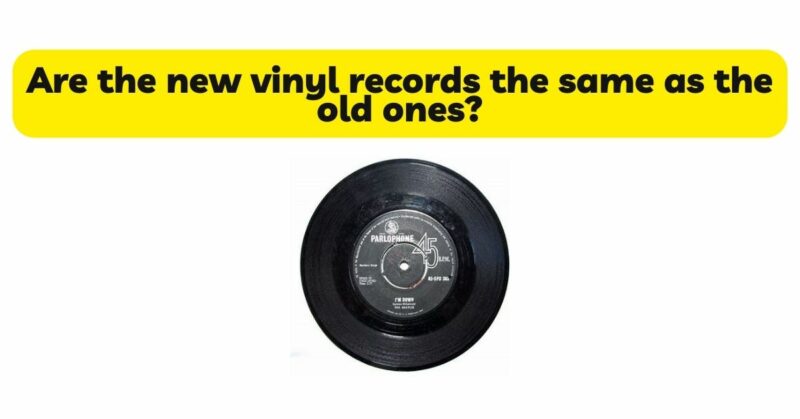The resurgence of vinyl records in recent years has sparked a debate among music enthusiasts about whether new vinyl records can truly replicate the experience and sound quality of their older counterparts. In this article, we will explore the similarities and differences between new and old vinyl records, considering factors such as manufacturing techniques, vinyl quality, mastering processes, and overall listening experience. By examining these aspects, we aim to shed light on the question of whether new vinyl records can match the essence of the cherished old ones.
Manufacturing Techniques: Manufacturing techniques have evolved over time, and there are differences between how new and old vinyl records are produced. Older records were often manufactured using traditional analog methods, whereas modern vinyl records benefit from advancements in pressing technology, resulting in improved precision, reduced surface noise, and enhanced sound quality. However, some pressing plants still employ vintage equipment and techniques to create a nostalgic feel for new vinyl releases.
Vinyl Quality: The quality of vinyl used in record production has also experienced advancements. Older vinyl records were sometimes prone to wear and surface noise due to the limitations of the formulations used at the time. New vinyl formulations, on the other hand, have been developed to provide better durability, reduced noise, and improved playback characteristics. As a result, new vinyl records can offer a cleaner sound with fewer imperfections.
Mastering Processes: Mastering is a critical step in the creation of vinyl records, and there have been changes in mastering techniques over the years. Older vinyl records often benefited from analog mastering processes, which some argue contributed to a warm and rich sound. Modern mastering techniques have evolved, leveraging digital tools and precise control over audio to enhance details, dynamics, and overall fidelity. Skilled mastering engineers can deliver exceptional sound quality in both new and old vinyl releases.
Original Recordings: The source material of vinyl records plays a significant role in their sound. Both new and old records can feature original recordings captured using different techniques and equipment. Older recordings may have been captured using analog equipment, while modern recordings are often done digitally. The choice of recording techniques, equipment, and mixing processes can affect the overall sound quality, regardless of the age of the record.
Remastering and Reissues: Many new vinyl releases include remastered versions of classic albums or reissues of older recordings. Remastering involves revisiting the original tapes and applying modern techniques to enhance the sound quality. When done with care and attention, remastered versions can offer improved clarity, dynamics, and fidelity. Thus, new vinyl releases can provide an opportunity to experience classic albums with enhanced sound quality.
Artwork and Packaging: One aspect where new vinyl records often aim to replicate the old is in the artwork and packaging. Many new releases strive to capture the aesthetic charm of vintage vinyl by adopting similar album cover designs, gatefold sleeves, and inserts. This attention to detail allows collectors and music enthusiasts to enjoy a nostalgic experience akin to owning an old vinyl record.
Listening Experience: The overall listening experience is subjective and influenced by personal preferences, equipment, and environmental factors. Some individuals may prefer the warm, nostalgic sound associated with older vinyl records, while others appreciate the cleaner, more precise sound offered by new vinyl releases. Both new and old vinyl records provide unique listening experiences, allowing music enthusiasts to connect with their favorite albums in distinct ways.
Conclusion: While there are differences between new and old vinyl records in terms of manufacturing techniques, vinyl quality, mastering processes, and overall listening experience, the gap between the two is not insurmountable. Advancements in pressing technology, vinyl formulations, and mastering techniques have allowed new vinyl records to capture the essence of the cherished old ones. While each has its own charm, the appreciation for vinyl records stems from their ability to deliver an engaging and immersive listening experience. Whether it’s the crackle of an old record or the pristine sound of a new release, vinyl continues to captivate audiophiles and music lovers alike, bridging the gap between generations and creating a lasting connection to the art of music.

